Gewiss GW14813 Handleiding
Gewiss
Niet gecategoriseerd
GW14813
Bekijk gratis de handleiding van Gewiss GW14813 (8 pagina’s), behorend tot de categorie Niet gecategoriseerd. Deze gids werd als nuttig beoordeeld door 53 mensen en kreeg gemiddeld 4.9 sterren uit 27 reviews. Heb je een vraag over Gewiss GW14813 of wil je andere gebruikers van dit product iets vragen? Stel een vraag
Pagina 1/8

Modulo RF per ingressi convenzionali
RF module for conventional inputs
Module RF pour les entrées conventionnelles
Módulo RF para entradas convencionales
Modul RF für herkömmliche Eingänge
Attenzione ! La sicurezza dell'apparecchio è garantita solo attenendosi
alle istruzioni qui riportate. Pertanto è necessario leggerle e conservarle.
I prodotti della gamma Chorus devono essere installati conformemente a
quanto previsto dalla norma CEI 64-8 per gli apparecchi per uso domestico
e similare, in ambienti non polverosi ed ove non sia necessaria una
protezione speciale contro la penetrazione di acqua.
L'organizzazione di vendita GEWISS é a disposizione per chiarimenti e
informazioni tecniche.
Warning ! The safety of this appliance is only guaranteed if all the
instructions given here are followed scrupulously.
These should be read thoroughly and kept in a safe place.
Chorus product series can be installed in compliance with the requirements of
HD 384 / IEC364 standards covering equipment for domestic and similar uses
in a dust-free environment and where no special protection against the
penetration of water is required.
The GEWISS sales organization is ready to provide full explanations and
technical data on request.
Attention ! La sécurité de l’appareil n’est garantie que si l’on respecte les
instructions mentionnées ci-joint.
Il est donc nécessaire de les lire avec attention et de bien les conserver.
Les produits de la gamme Chorus doivent être installés en conformité avec les
normes HD 384 / IEC364 sur les appareils à usage domestique et similaire,
dans des milieux non poussiéreux et où il n'est pas nécessaire d' avoir une
protection spéciale contre la pénétration d'eau.
L'organisation de vente GEWISS est à votre disposition pour toute élucidation
ou information technique.
Atención ! La seguridad del aparato está garantizada sólo si se respetan
las instrucciones aquí incluidas. Por lo tanto es necesario leerlas y
conservalas.
Según lo dispuesto por las normas HD 384 / IEC364 referidas a los
aparatos para uso doméstico y similar, los productos de la gama Chorus
se pueden instalar en ambientes no polvorientos y en los lugares donde no
se requiere una protección especial contra la penetración del agua.
La organización de ventas GEWISS está a su disposición para aclaraciones
e informaciones técnicas.
Achtung ! Die Sicherheit des Geräts ist nur durch Einhalten der hier
aufgeführten Anleitungen gewährleistet.
Diese müssen daher aufmerksam durchgelesen und sorgfältig
aufbewahrt werden.
Die Produkte der Reihe Chorus sind für die Installation gemäß den
Bestimmungen der Normen HD 384 / IEC364 bezüglich Haushaltsgeräte
u.ä. in staubfreien Räumen und in Räumen, in denen keine spezielle
Absicherung gegen das Eindringen von Wasser erforderlich ist, bestimmt.
Die GEWISS-Verkaufsorganisation steht Ihnen für weitere technische
Informationen gerne zur Verfügung.
GW 10 813 - GW 12 813 - GW 14 813

2
Descrizione
Il modulo per ingressi convenzionali, in funzione dello stato di due ingressi dedicati,
invia comandi radio verso attuatori della serie CHORUS RF, quali:
• moduli di uscita 3A,
• moduli di uscita 16A,
• moduli di uscita per comando motore.
Il modulo è dotato di un led verde (A) di segnalazione. I due ingressi (B-C) sono
dedicati al collegamento di contatti, privi di potenziale, di apparecchi di comando
(pulsanti, interruttori, sensori, ecc.). Il modulo è alimentato a 230 V.
Un selettore rotativo (D), consente la scelta della modalità di funzionamento, valida
per entrambi i canali di ingresso.
Configurazione
Per realizzare l’associazione con un modulo di uscita è sufficiente chiudere il contatto di
ingresso del canale che di desidera abbinare, dopo aver posto il modulo di uscita in
apprendimento configurazione. È possibile associare i canali di ingresso, in modo
indipendente, ad attuatori distinti, tranne nel caso in cui si voglia utilizzare la modalità
INGRESSI ABBINATI. In tal caso, ad ogni modulo di uscita, devono essere sempre
associati entrambi i canali. Ogni associazione può essere effettuata indipendentemente
dalla modalità di funzionamento selezionata in quel momento.
Funzionamento
Il modo di funzionamento del modulo è determinato in base alla posizione scelta sul
selettore rotativo.
Modalità ingressi abbinati
La modalità ingressi abbinati è utilizzata per collegare al(selettore in posizione 0)
modulo una coppia di pulsanti monostabili o un pulsante doppio interbloccato, che
devono funzionare in abbinamento. Collegando agli ingressi i contatti di un pulsante
doppio interbloccato, è possibile:
• in abbinamento con un modulo di uscita 3A o 16A, configurato in funzionamento
BISTABILE, ad esempio per comando luci, accendere le luci (ON) premendo il pulsante
collegato al canale 1, spegnere le luci premendo il pulsante collegato al canale 2;
• in abbinamento con un modulo di uscita per comando motore, comandare la salita
di una tapparella premendo il pulsante collegato al canale 1, l’abbassamento,
premendo il pulsante collegato al canale 2. L’arresto si ottiene premendo
indifferentemente uno dei due pulsanti quando la tapparella è in movimento.
Nella modalità ingressi abbinati, sono possibili abbinamenti con attuatori configurati
in funzionamento MONOSTABILE (ON alla chiusura del contatto del canale e OFF
all’apertura) e TEMPORIZZATO (ON alla chiusura del contatto del canale e OFF
automatico allo scadere della temporizzazione impostata).
Modalità stato
La modalità stato è utilizzata per collegare al modulo(selettore in posizione 1)
contatti NA di dispositivi per comando automatico. Collegando, per esempio, ad un
ingresso il contatto (NA) di un orologio, è possibile:
• in abbinamento con un modulo di uscita 3A o 16A, configurato in funzionamento
BISTABILE, attivare/ disattivare, l’irrigazione di un giardino in funzione dello stato
del contatto (chiusura/apertura).
Collegando, ad esempio, all’altro ingresso il contatto (NA) di un sensore crepuscolare,
è possibile:
• in abbinamento con un modulo per comando motore, comandare la salita/ discesa
di una tenda da sole in funzione dello stato del contatto (ON/OFF).
In modalità stato il modulo ritrasmette periodicamente (10 minuti) il comando anche in
assenza di cambiamenti dello stato del contatto di ingresso. Le ripetizioni dei messaggi
sono ignorate dall’attuatore comando motore. Nella modalità stato, non sono possibili
abbinamenti con attuatori configurati diversamente da quanto sopra descritto.
Modalità inversione
La modalità inversione (selettore in posizione 2) è utilizzata per collegare al modulo
contatti NA, per generare comandi ciclici ON-OFF. Collegando, ad esempio, un
pulsante (NA) ad un ingresso, è possibile:
• in abbinamento con un modulo di uscita 3A o 16A, configurato in funzionamento
BISTABILE, attivare e disattivare carichi, ciclicamente, in corrispondenza di ogni
pressione del pulsante.
Collegando, al secondo ingresso, un altro pulsante, è possibile gestire, in modo
equivalente, un ulteriore gruppo di carichi. Nella modalità inversione, non sono possibili
abbinamenti con attuatori configurati diversamente da quanto sopra descritto.
Modalità ON
La modalità ON è utilizzata per collegare al modulo(selettore in posizione 3)
contatti NA, e generare solo il comando ON. Collegando, per esempio, ad un ingresso
il contatto (NA) di un rivelatore di gas, è possibile:
• in abbinamento con un modulo di uscita 3A o 16A, configurato in funzionamento
BISTABILE, comandare la chiusura di una elettrovalvola NA, a seguito
dell’intervento del rivelatore.
Collegando, per esempio, il secondo ingresso ad un pulsante (NA), è possibile:
• in abbinamento con un modulo di uscita 3A o 16A, configurato in funzionamento
TEMPORIZZATO, ad esempio per la gestione luci scale, accendere le luci (ON)
premendo il pulsante. Lo spegnimento delle luci (OFF) avviene automaticamente
allo scadere della temporizzazione impostata sull’attuatore.
Nella modalità ON sono possibili abbinamenti con attuatori comando motore (es.
sollevamento della tapparella alla chiusura del canale).
Modalità OFF
La modalità OFF è utilizzata per collegare al modulo(selettore in posizione 4)
contatti NA, e generare solo il comando OFF. Collegando, per esempio, ad un ingresso
il contatto (NA) di un rivelatore d’acqua, è possibile:
• in abbinamento con un modulo di uscita 3A o 16A, configurato in funzionamento
BISTABILE, comandare l’apertura di una elettrovalvola NC, a seguito
dell’intervento del rivelatore.
Nella modalità OFF sono possibili abbinamenti con attuatori comando motore (es.
abbassamento della tapparella alla chiusura del canale).
Segnalazioni
Trasmissione di un comando
Un lampeggio del led verde segnala l’avvenuta trasmissione di un comando.
Installazione
I moduli per ingressi convenzionali sono installati ad incasso, utilizzando gli appositi
supporti della serie Chorus. Utilizzando il coperchio copri morsetti è possibile
mantenere il grado di protezione anche per installazioni differenti dall’incasso (es. in
cassette di derivazione, all’interno di dispositivi ed altro).
Attenzione: quando il modulo di uscita è alimentato, i conduttori dei due canali
di ingresso sono in tensione.
Dati tecnici
- Temperatura operativa -5°+40°C
- Frequenza radio 868 MHz
- Portata radio 100 m in campo libero
- Alimentazione 230V 50Hz
- Dimensioni 1 modulo Chorus
I T A L I A N O
1 N
2 L 230V 50Hz
1 2
Led verde
di segnalazione
Ingresso canale 1
(cavetti bianchi)
Ingresso canale 2
(cavetti rossi)
Coperchio copri
morsetti
AC B
0 - modalità INGRESSI ABBINATI
1 - modalità STATO
2 - modalità INVERSIONE
3 - modalità ON
4 - modalità OFF
5 - non utilizzata
6 - non utilizzata
7 - non utilizzata
8 - non utilizzata
9 - non utilizzata
D

3
Terminal cover
Description
The conventional inputs module, depending on the status of the two dedicated
inputs, sends radio controls to the RF CHORUS series actuators, such as:
• 3A output modules,
• 16A output modules,
• motor control output modules.
The module is provided with a green signal LED (A). The two inputs (B-C) are
dedicated to the connection of contacts, without potential, of control appliances
(buttons, switches, sensors, etc.). The module is powered at 230 V.
A rotary switch (D) is used to select the operating mode, valid for both input channels.
Configuration
All that is required to make the association with an output module is to close the
input contact of the channel to be combined after having set the output module to
learn configuration. The input channels can be associated independently to distinct
actuators, except in the case when COMBINED INPUTS is to be used. In this case both
channels must always be associated to each output module. Each association can be
made independently of the operating mode selected at that time.
Operating
The module’s operating mode is determined by the position of the rotary switch.
Combined inputs mode
The combined inputs mode is used to connect the module to(switch in position 0)
a pair of monostable buttons or an interlocked double button, which must operate in
combination. By connecting the contacts of an interlocked double button to the
inputs, it is possible to:
• in combination with a 3A or 16A output module, configured for BISTABLE
operation, for example to control lights, switching on the lights (ON) by pressing
the button connected to channel 1 and switching off the lights by pressing the
button connected to channel 2;
• in combination with a motor control output module, controlling the raising of a
roller blind by pressing the button connected to channel 1 and its lowering by
pressing the button connected to channel 2. The roller blind is stopped by pressing
either of the two buttons when it is in motion.
In combined inputs mode, combinations are possible with actuators configured for
MONOSTABLE operation (ON when the channel contact is closed and OFF when it is
opened) and TIMED (ON when the channel contact is closed and automatic off when
the set time has elapsed).
Status mode
The status mode is used for connecting the module to the NA(switch in position 1)
contacts for automatically controlled device. For example, by connecting one input to
the contact (NA) of a clock, it is possible to:
• in combination with a 3A or 16A output module, configured for BISTABLE
operation, start/stop the watering of a garden depending on the status of the
contact (closed/open).
For example, by connecting the other input to the contact (NA) of a twilight sensor, it
is possible to:
• in combination with a motor control module, control the raising/lowering of a sun
blind depending on the status of the contact (ON/OFF).
In status mode the module periodically (10 minutes) retransmits the command even
if there are no status changes to the input contact. Repetitions of messages are
ignored by the motor control actuator. Combinations with actuators configured other
than as described above are not possible in status mode.
Inversion mode
The inversion mode is used to connect the module to NA(switch in position 2)
contacts to generate cyclic ON-OFF commands. For example, by connecting a button
(NA) to an input, it is possible to:
• in combination with a 3A or 16A output module, configured for BISTABLE operation,
activate and disactivate charges, cyclically, each time the button is pressed.
By connecting another button to the second input, it is possible to manage a further
group of charges in the same way. Combinations with actuators configured other
than as described above are not possible in inversion mode.
ON mode
The ON mode is used to connect the module to NA contacts(switch in position 3)
and to generate the ON command only. For example, by connecting one input to the
contact (NA) of a gas sensor, it is possible to:
• in combination with a 3A or 16A output module, configured for BISTABLE operation,
command the closing of an NA solenoid valve after the sensor has cut in.
For example, by connecting the second input to a button (NA), it is possible to:
• in combination with a 3A or 16A output module, configured for TIMED operation,
for managing staircase lights, for example, to switch on the lights (ON) by pressing
the button. The lights are switched off (OFF) automatically when the time set on
the actuator has elapsed.
Combinations with motor control actuators (e.g. for raising a roller blind when the
channel is closed) are possible in ON mode.
OFF mode
The OFF mode is used to connect the module to NA contacts(switch in position 4)
and to generate the OFF command only. For example, by connecting one input to the
contact (NA) of a water sensor, it is possible to:
• in combination with a 3A or 16A output module, configured for BISTABLE operation,
command the opening of an NC solenoid valve after the sensor has cut in.
Combinations with motor control actuators (e.g. for lowering a roller blind when the
channel is closed) are possible in OFF mode.
Signals
Transmitting a command
A blink of the green LED signals that a command has been transmitted.
Installation
The conventional input modules have inset installation, using the special Chorus
series supports.
The protection level can be maintained, even for installations other than inset (e.g. in
junction boxes, inside devices, etc.) by using the terminal cover.
Attention: the conductors of the two input channels are live when the output
module is powered up.
Technical data
- Operating temperature -5°+40°C
- Radio frequency 868 MHz
- Radio range 100 m in a free field
- Supply 230V 50Hz
- Dimensions 1 Chorus module
E N G L I S H
1 N
2 L 230V 50Hz
1 2
Green signal
LED
Channel 1 input
(white wires)
Channel 2 input
(red wires)
AC B
0 - COMBINED INPUTS mode
1 - STATUS mode
2 - INVERSION mode
3 - ON mode
4 - OFF mode
5 - not used
6 - not used
7 - not used
8 - not used
9 - not used
D
Product specificaties
| Merk: | Gewiss |
| Categorie: | Niet gecategoriseerd |
| Model: | GW14813 |
| Kleur van het product: | Titanium |
| Type stroombron: | AC |
| Maximumbereik: | 100 m |
| Aantal kanalen: | 2 kanalen |
| AC-ingangsspanning: | 230 V |
| AC-ingangsfrequentie: | 50 Hz |
Heb je hulp nodig?
Als je hulp nodig hebt met Gewiss GW14813 stel dan hieronder een vraag en andere gebruikers zullen je antwoorden
Handleiding Niet gecategoriseerd Gewiss

1 Februari 2024

1 Februari 2024

1 Februari 2024

1 Februari 2024

1 Februari 2024

1 Februari 2024

1 Februari 2024

1 Februari 2024

1 Februari 2024

1 Februari 2024
Handleiding Niet gecategoriseerd
- KENUCO
- Adastra
- Highpoint
- Harvia
- Scanstrut
- DBX
- 2hp
- Exit
- Hähnel
- Stiebel Eltron
- Vitec
- DigitSole
- Cane Creek
- Bestron
- Nature2
Nieuwste handleidingen voor Niet gecategoriseerd
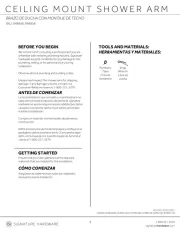
31 Juli 2025
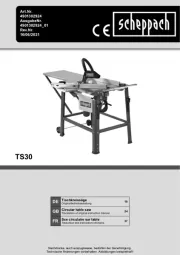
31 Juli 2025
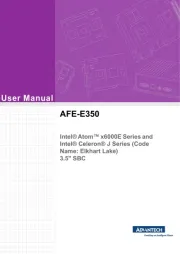
31 Juli 2025
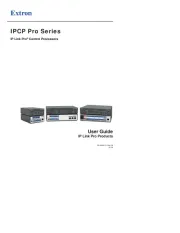
31 Juli 2025
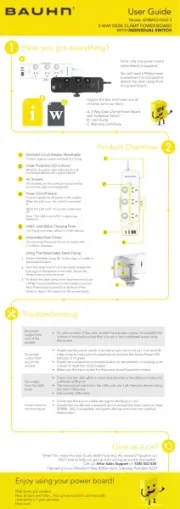
31 Juli 2025
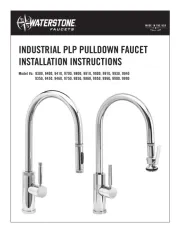
31 Juli 2025
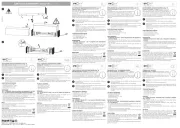
31 Juli 2025
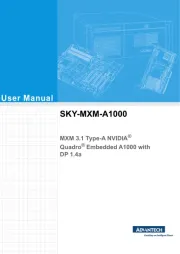
31 Juli 2025

31 Juli 2025
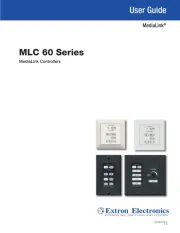
31 Juli 2025